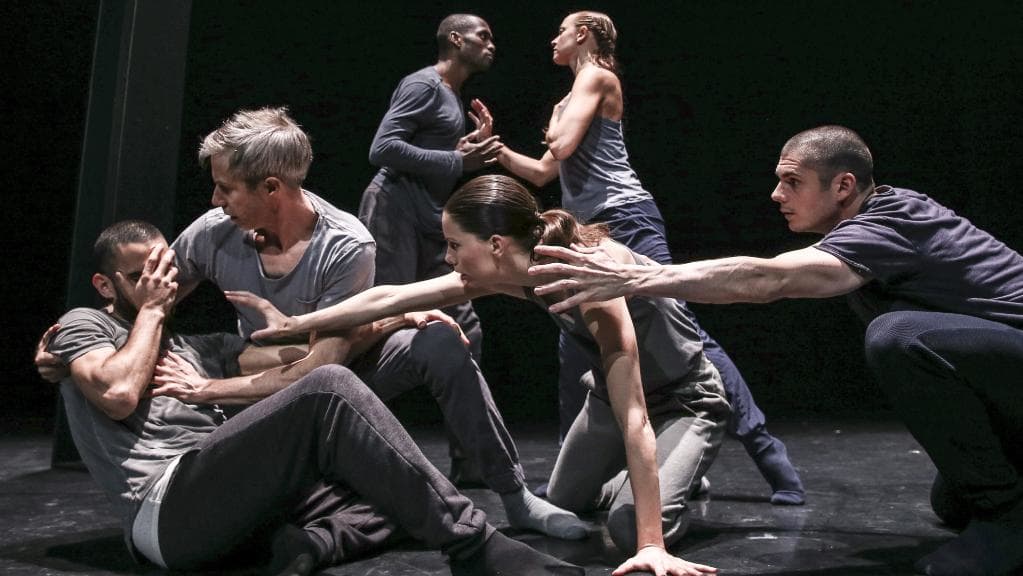Betroffenheit: An emotional spectacle which transforms the power of dance

Reviewed by Natasha Lomonossoff on Saturday April 7, 2018
Betroffenheit, a creation by renowned Canadian choreographer Crystal Pite and writer Jonathon Young, is at once a powerful visual and emotional spectacle. A well-executed combination of dance and theatre, the production explores the difficult subjects of trauma and addiction through searing and imaginative physical manifestations of one’s inner demons. A co-production between Pite’s (also the director) Kidd Pivot group and Young’s Electric Company Theatre, Betroffenheit has received critical acclaim since it premiered at Panamia in Toronto three years ago. Indeed, it’s a pity that it played at the Babs Asper Theatre in the NAC for only two nights (April 6 and 7 respectively), since this production is easily one of the more unique offerings in the organization’s dance program.
The story, which is based on writer Young’s own experience of loss and grief, revolves around the struggle of the main character (portrayed by him) to come to terms with his survival from an accident in which he could not help others who perished and to break the drug addiction he has developed to cope with his trauma in the meantime. The doubts and demons which continually remind him of the accident (as well as his hallucinations while high) are manifested through the dances and movements of five other performers onstage. Further adding to this unique presentation is the fact that the voices of these characters each come from offstage; the performers themselves do not speak (except for Young) but rather lip sync to recorded voices that represent the sentiments which haunt the protagonist. This combination of detached voices and vivid movement (as well as facial expressions) often makes for a compelling visual image onstage. The wrestling between Young’s character and a therapist figure (portrayed by Jermaine Spivey) who extolls him to forget is one example of this. From this group, however, distinct characters also emerge.
A girl in clown face, portrayed by a nimble Tiffany Tregarthen, becomes the metaphor for the protagonist’s continuous downfall; whenever she appears, one knows that something bad is bound to happen. The therapist figure also provides a strong presence as he accompanies the protagonist through his strategy plotting and failed attempts to move on from his experience. The dances performed onstage, which range from tap to salsa, are perfectly synchronized. Yet it is precisely the synchrony with which the dancers move which makes them an unnerving and threatening presence, as they personify the forces which drag the protagonist back to the moment of his trauma (the foreboding tap dance performed by the dancers entering in formation being a particularly potent example of this).
Beneath the spectacle is an especially resonant message of just how difficult it is to let go and move on after one has experienced something traumatic. The sequences of the production focus on this universal difficulty throughout, with no easy resolution at the end; a painful truth is still expressed, however: that in a memory, no matter how traumatic it is, there’s still something to go back to or find. This cycle of revisiting the past is expressed vividly but with compassion in Betroffenheit, in a truly innovative artistic manner.
Written by Jonathon Young
Choreographed and directed by Crystal Pite
Performers: Christopher Hernandez, David Raymond, Cindy Salgado, Jermaine Spivey, Tiffany Tregarthen, Jonathon Young
Composition and sound design by Owen Belton, Alessandro Juliani and Meg Roe
Set design by Jay Gower Taylor
Lighting design by Tom Visser
Costume design by Nancy Bryant